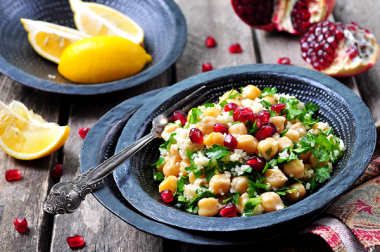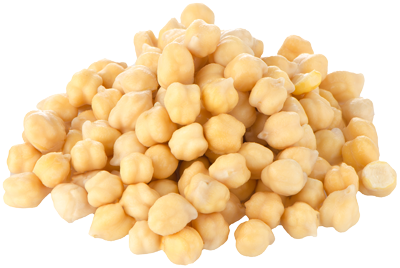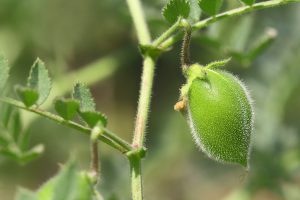Recipes we love
See all recipesCouscous
Discovery Eastern countries and their culinary traditions with a dish that will satisfy the taste bu...
Chick pea cream
A great recipe that brings dried vegetables back into fashion: make the most of all the precious nut...
Vegetable tagine
Plenty of complementary benefits come together in this recipe: complex carbohydrates from the chick ...
Health
benefits
An excellent meat substitute
Chickpeas are rich in plant-based protein, starch (a complex carbohydrate), vitamins, and minerals. They are low in fat and are cholesterol-free, making them an outstanding alternative to meat. These dry legumes are one of the most nutritionally beneficial.
Chickpeas are also :
- a source of vitamin B9 (for cellular renewal, particularly important for pregnant women for fetal development, for growing children, and for convalescents).
- a source of fiber (bowel movement regulation, satiety)
They also contain :
- magnesium (reduction of fatigue, energy, protein synthesis, muscular contraction, nerve transmission, health bones and teeth)
- iron (cognitive functions, oxygen transport, energy metabolism, immune system)
- phosphorus (energy, healthy bones and teeth, cell membranes).
- manganese (energy metabolism, healthy bones, antioxidant)
- copper (energy, nervous system, immunity, antioxidant)
Our food is at the heart of environmental issues. Discover our white paper on the importance of moving towards a more plant-based diet, for our own health and that of the planet
Nutritional
composition
When is the right
time to eat them?
All year.
Chickpeas are available dry, canned, or in a flour, meaning that they can be eaten year-round. They are harvested in the summer, between July and September.
Vegetable patch
or urban balcony?
Chickpeas are annuals that grow well in full sun, in sandy, deep, dry soil with a neutral pH (pH = 7).
To learn everything you need to know about growing chickpeas, read the page on growing advice.
Anti-waste tips
Do you have some chickpeas left over? Making hummus is not the only option! Other things you could do include adding them to a salad, or making some plant-based burgers by mixing them with an egg, an onion and some herbs and spices.
And what can you do with the water you cook chickpeas in, which is called aquafaba? Once it’s cooled down, whisk the aquafaba into peaks with an electric mixer, and add to melted chocolate for a 100% plant-based, 100% delicious chocolate mousse!
What is the environmental impact?
The Product Environmental Footprint (PEF), a score established by Agribalyse*, tells us more! It takes account of all the phases in a vegetable’s life cycle: how it’s grown, the impact of its transport, the impact of its processing, and so on. The lower the score, the lower the environmental impact.
- Chickpeas, dry: 0.12
- Chickpeas, cooked: 0.14
- Chickpeas, canned: 0.21
- Steak, raw: 2.77
*Data taken from the Agribalyse database, which gives the environmental score of foodstuffs. This unique score is the average of 16 indicators, calculated using the European methodology PEF. It is not the same as an environmental label or “eco-score”.
CO2 equivalent: for 100g of chickpeas: 0.127 kg of CO2 eq, which is the same as 3.8 g of raw steak or driving 508 m by car.
CHOOSING AND
STORING CHICKPEAS
Properly store your chickpeas:
- Store both canned and dry chickpeas in a cool, dry place.
Choose your chickpeas well:
- When dry, chickpeas should be very firm and uniform in color.
Tips and
tricks
How to prepare chickpeas
Dry chickpeas should be soaked (for 12 hours) in cold water before being cooked. Throw away the water used for soaking, as it contains elements that may cause gas.
Soaking is a must! For chickpeas, soaking is important. It has three truly necessary functions, allowing the grains to expand, making them easier to digest, and helping them cook faster.
Don’t forget to rinse canned chickpeas before use.
Cooking times:
- 90 min: boiled in water
- 45 minutes: in a pressure cooker
Tip for making sure chickpeas don’t remain hard and for making them easier to digest:Don’t add salt at the beginning of the cooking process, but rather at the end. Add aromatic herbs (thyme, bay leaf, oregano), which also add flavor.
Chickpeas go well with…
Usually eaten throughout the Middle East and North Africa, chickpeas are an indispensable ingredient in dishes including couscous, falafel, and hummus.
They can be served in a salad with tomatoes, bell peppers, onions, and herbs. Both whole and pureed, they pair well with meats such as lamb and chicken and also with fish such as tuna. Chickpeas can replace potatoes for thickening blended vegetable soups. Cumin is a particularly well-suited seasoning for these legumes.
Chickpea flour, which is gluten free, is used in nearly all Mediterranean countries to make various flatbreads and fritters (such as socca and panisse in the South of France, pannelle in Sicily).
Did you know? The original couscous from the Moroccan desert did not include meat! The dish is a mixture of vegetables, such as onions, peppers, eggplants, zucchini, and chickpeas, cooked in broth. The mixture is served over a mountain of couscous (made of semolina). The plant proteins in the couscous and the chickpeas complement each other, providing sufficient protein. It was only for holidays and distinguished guests that roasted meats such as lamb, merguez sausage, and chicken were added to couscous.
Can everyone
eat them?

Young children
Children can start eating chickpeas between 15 and 18 months of age, first in a puree.
And everyone else
Everyone likes the mild taste of chickpeas.
To be sure that you fully benefit from pulse proteins, eat a grain product or nuts and seeds with the chickpeas, because they do not contain all the amino acids that the body needs. They are rich in lysine (an amino acid) but have very little methionine (another essential amino acid). As for grain products (wheat, rice, etc.), nuts, and seeds, they contain essential amino acids that pulses lack or contain only in small quantities. So when you combine those foods with chickpeas, you make sure your diet contains excellent-quality complete proteins. It’s the winning plant-based protein combination!
See plenty of other tips for encouraging children to eat vegetables
Where do they come from?
Origins and varieties
Origins
The main chickpea-producing countries are India, Australia, Turkey, Myanmar, Ethiopia, Iran, Pakistan, Mexico,and Canada. They are a relatively minor crop in France.
Varieties
The different chickpea varieties are all characterized by their irregular shape (round or bumpy) and their creamy color. However, they have distinct colors, ranging from yellow to black, with green, red, and brown in between. Some are doughier in texture, and others have a slight hazelnut flavor.
Did you know? Roasted chickpeas can be used as a coffee substitute.



 Soy
Soy  Bitter greens
Bitter greens  Vegetable garden: growing lettuce
Vegetable garden: growing lettuce 










